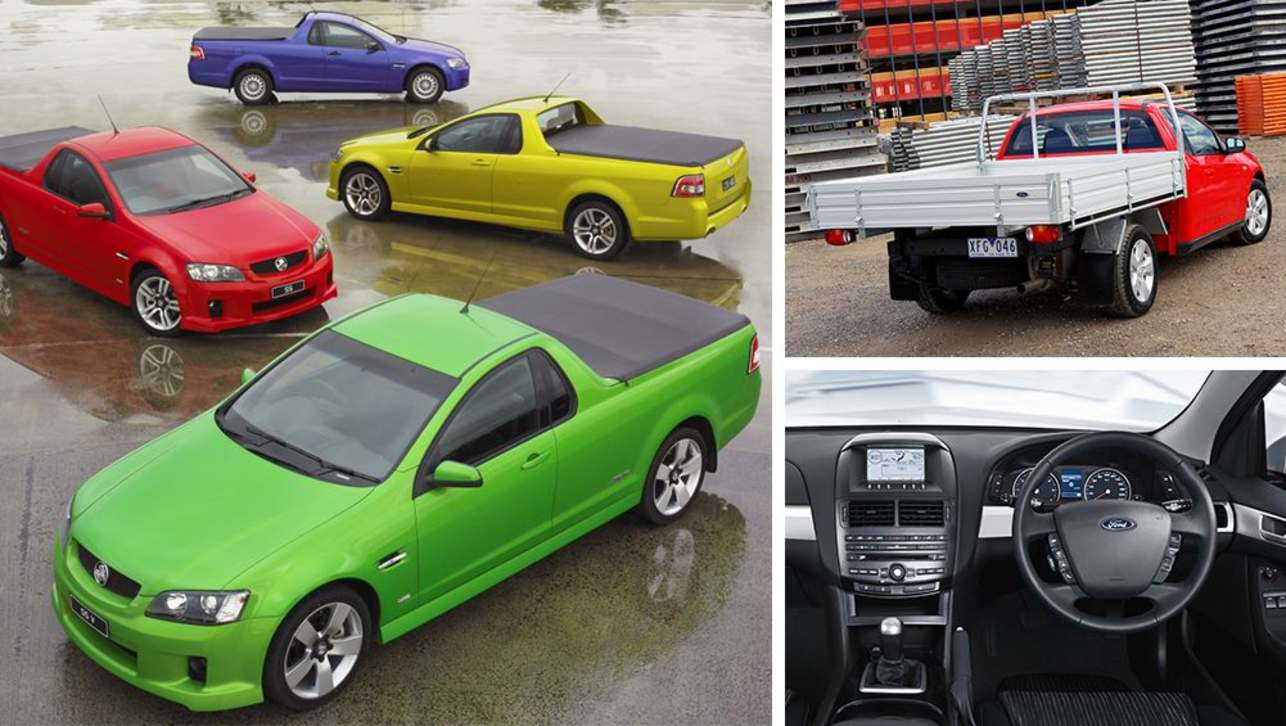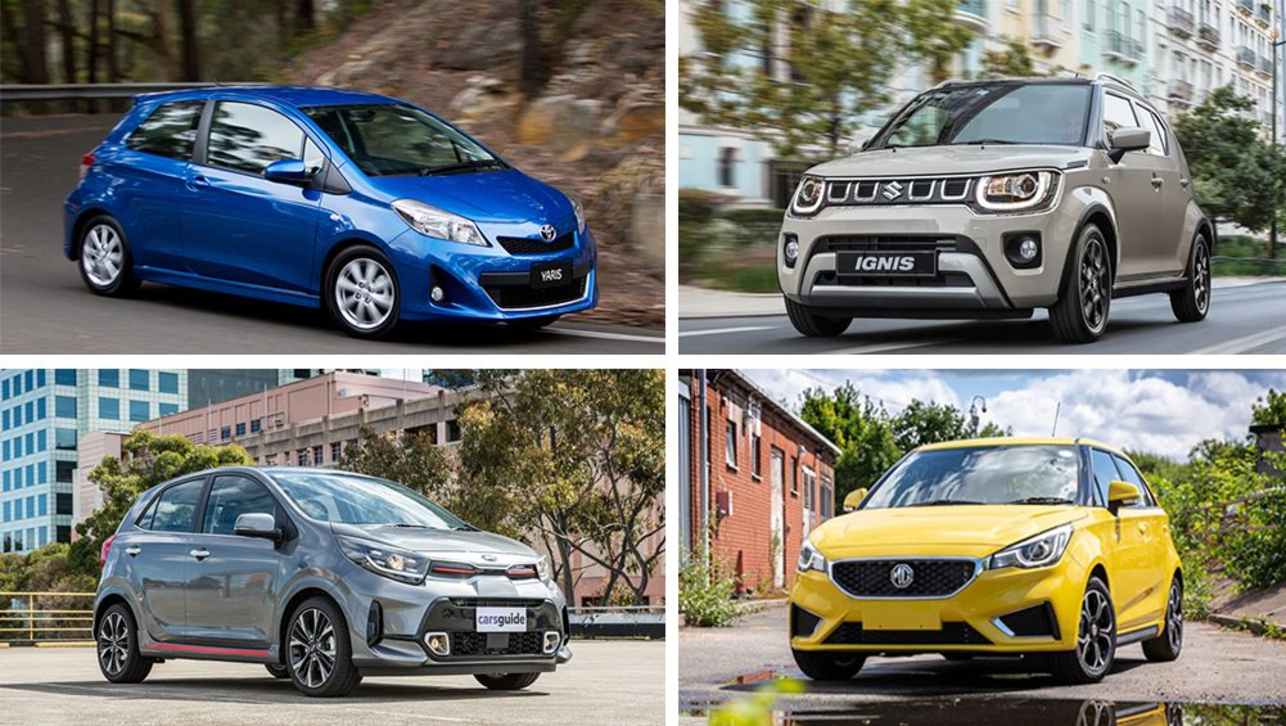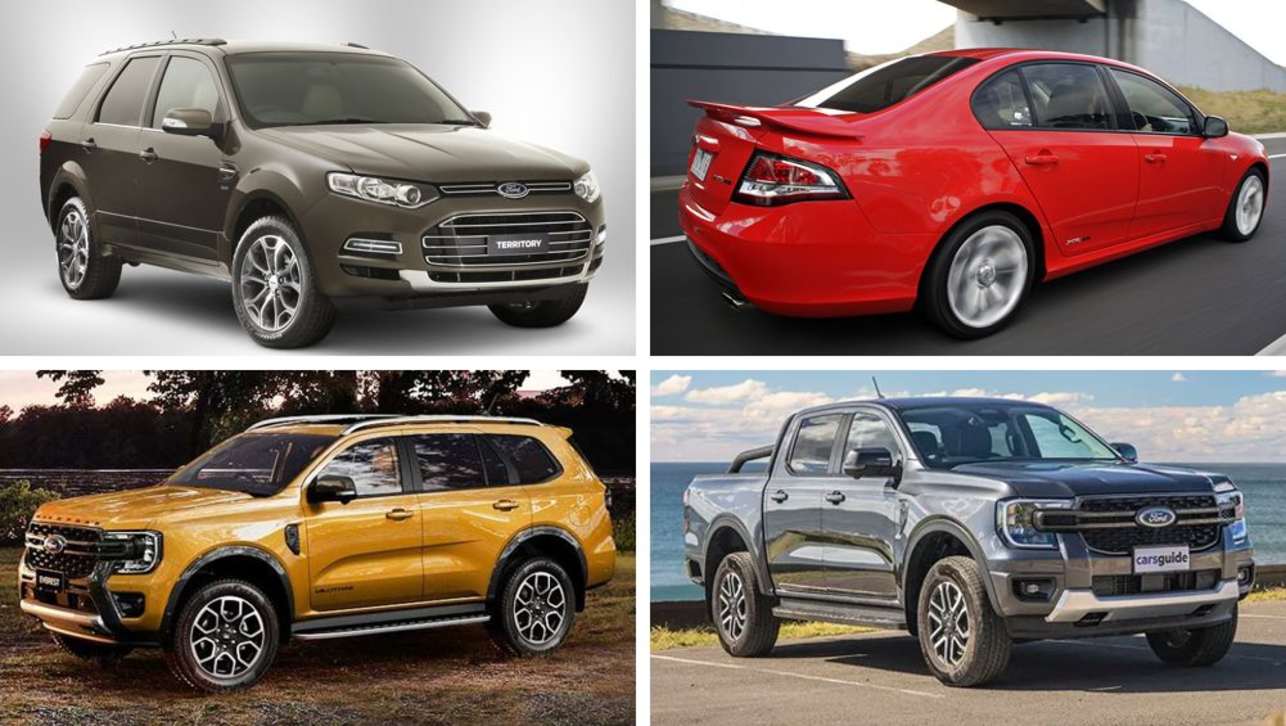To be fair, car companies get it right more than that get it wrong. But even the best made plans come unstuck sometimes, and there’s also no doubting that the car industry has been responsible for some absolute howlers over the years, with flops and fails that ended up costing the companies big time, both in cold, hard cash and in reputation damage. Even the Ford Falon and Holden Commodore get it wrong occasionally.
So let’s take a moment to celebrate these monumental stuff-ups, shall we? After all, a lesson not learned is one you’re destined to repeat, right?
Read on for part two of what we think are the biggest new-car fails.
Ford AU Falcon

What was the beginning of the end for Ford and the Falcon? Plenty of people track the moment back to the launch of the AU Falcon.
Such was the reaction to the AU Falcon - the chariot of choice for taxi drivers across the country in the decades since - when it first launched in 1998 that sales slumped and the Holden VT Commodore took a strong sales lead (and at a time when the competition between the two brands was white hot).
So disappointing was the AU Falcon’s sales results, in fact, that reports at the time pointed to Ford dropping a cool $500m on a “significantly re-engineered” model just four years later, this time called the BA Falcon.
Still, the AU lives on as a kind of anti-icon of Aussie automotive in countless memes and FB groups.
Ford Capri

In the battle of the Ford Capri versus the Mazda MX-5, there can be no mistaking who won. Need a hint? Which one can you still buy today?
That’s possibly an unfair comparison, but the timing certainly works, given the Capri arrived on the scene at the same time as Mazda’s rear-drive icon, after the former suffered years-long production delays.
The Ford? It was front-wheel drive, European-designed and initially delivered a not-so-whopping 62kW. The plan was for this affordable soft-top to shine in Australia before being exported to the USA.
But shine it did not. Not here, and certainly not in America, where Ward's Auto World magazine says "It was almost free of redeeming qualities. It had absolutely no curb appeal."
The model was dead by 1994, not long after Tickford turned out the well-received Clubsprint variant, with unique suspension and performance upgrades. It, said Ford at the time, was the car the Capri should have been from day one, but by then the damage was done.
Suzuki X90

What if I told you that Suzuki made a two-door, targa-topped, half-SUV with genuine off-road aspirations and a serious case of multiple-personality disorder.
That car was the Suzuki X90, which was produced for just two years (1995-1997), with reports pointing to less than 10,000 vehicles finding homes around the world, most finally attracting buyers years after production had stopped.
The model's tag line in the USA? “What are you staring at?”. Which really should have told the marketers all they needed to know…
Holden ZB Commodore

Look, the 2018 arrival of the ZB Commodore was a tough time in Holden’s history - a brand that is, of course, now also history.
The brand was waving goodbye to the VF II - the last locally made Commodore - as well as its screaming flagship, the V8-powered, rear-drive SS-V Redline. The production lines at Holden’s South Australian plant had fallen silent in 2017, and Holden was forced to look abroad for a replacement for its Aussie icon.
What it found was the German-made Opel Insignia - a front- or all-wheel drive mid-size sedan built on a global E2 architecture and without a V8 engine or RWD in sight.
To say the backlash from the Commodore faithful was an understatement, and the Opel lasted less than two years before it was scrapped - earning it the unintended honour of being the most short-lived Commodore in the model’s history.
Soon after, GM announced that Holden itself would be shuttered in Australia.
Interestingly, though, the ZB Commodore was definitely not a bad car, and some argued - myself included - that had Holden simply called it an Insignia rather than trying to convince us it was a Commodore, its reception in Australia would have been far warmer.
Mercedes-Benz X-Class
.jpg)
Billed as the world’s first premium pick-up, the X-Class was intended to forge new ground for the German giant in the worksite and lifestyle space.
The Nissan-based ute launched in Australia in April, 2018. By May 2020, it was gone, having been plagued by lacklustre sales and plenty of strong feedback that sticking a star on the front of a Navara does not a Mercedes-Benz ute make.
How lacklustre were those sales? Put it this way. In 2019, Mercedes-Benz sold 15,300 X-Class utes worldwide, and just 2186 in Australia. Toyota, on the other hand, sold 47,759 examples of the HiLux in Australia alone.
It was an expensive mistake for Mercedes-Benz (a brand that doesn’t make many, to be fair). While the brand has never revealed the total sum, the marketing, promotion and media activity alone would have been a very big number, and that’s before you even talk engineering and production.
Honda CR-Z Hybrid
-w.jpg)
Plenty of hype accompanied the Honda CR-Z Hybrid when it touched down in Australia towards the end of 2011. Here was a funky-looking sports car that promised to match performance with efficiency, care of its hybrid powertrain and slick manual gearbox.
The problem? It didn’t actually offer much in the way of performance - with its outputs of 100kW/190Nm, and a sprint to 100km/h of 9.0 seconds.
So say sales are were slow is an understatement. After recording 370 sales in its first year on sales, CR-Z managed just 58 units in 2013, and then 86 sales in 2014.
The writing was one the wall, and the model was scraped locally at the beginning of 2015.
Renault Zoe

You’ve got to feel for the Renault Zoe, which at least partly fell victim to being early to the electrification party in Australia.
The EV Zoe touched down in Australia around the middle of 2017, packing a driving range of around 300km and a competitive (by EV standards) sub-$50k asking price.
The model had proven popular enough overseas, with European EV sales beginning to boom at the time, and Renault clearly though the spark would catch in Australia, too.
But… it didn’t. Renault sold a total 63 units. And that’s not in a 12-month period, but in total over its three-year run.
Surprising nobody, it was then pulled from the market.
Opel Australia

In August 2012, the GM-owned German brand arrived in Australia with mega fanfare. It had an entirely local executive line-up, a very familiar model in the Astra, huge plans for this market led by 20 Opel dealerships, and a reasonable sales target of 15,000 units.
Instead, it sold closer to 1000 units total.
A touch under 12 months later, it was gone, with local representatives blaming shifting goalposts and an unsustainable business model for it rapid departure.
That's a very expensive 12 months...
Want to add to the list? Tell us in the comments below.



.jpg)



.jpg)



.jpg)
.jpg)



.jpg)

.jpg)



.jpg)
.webp)




Comments